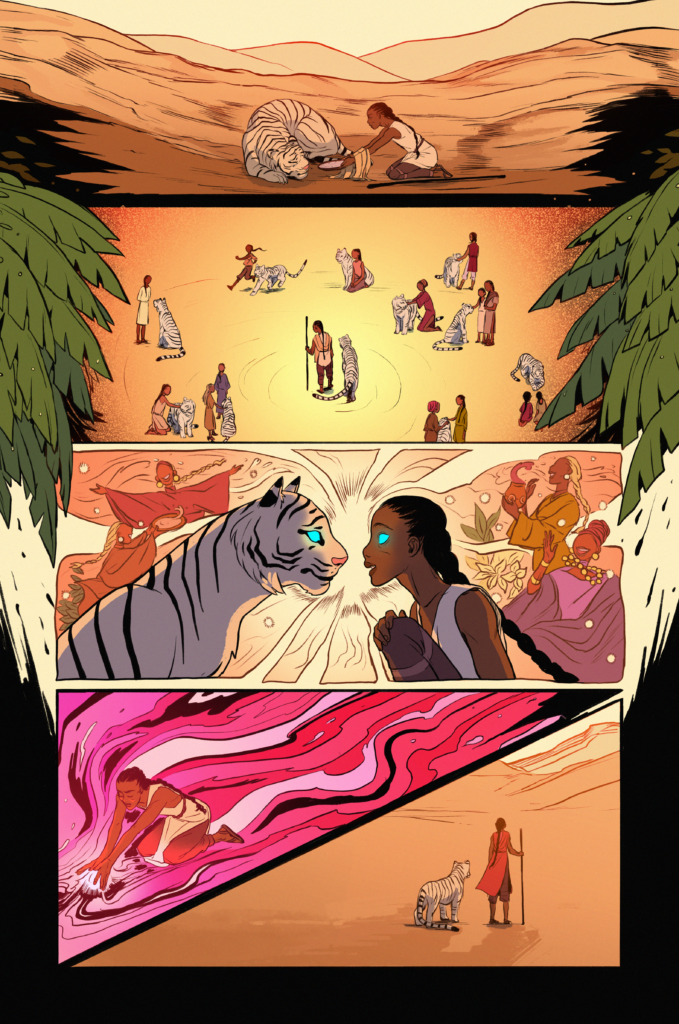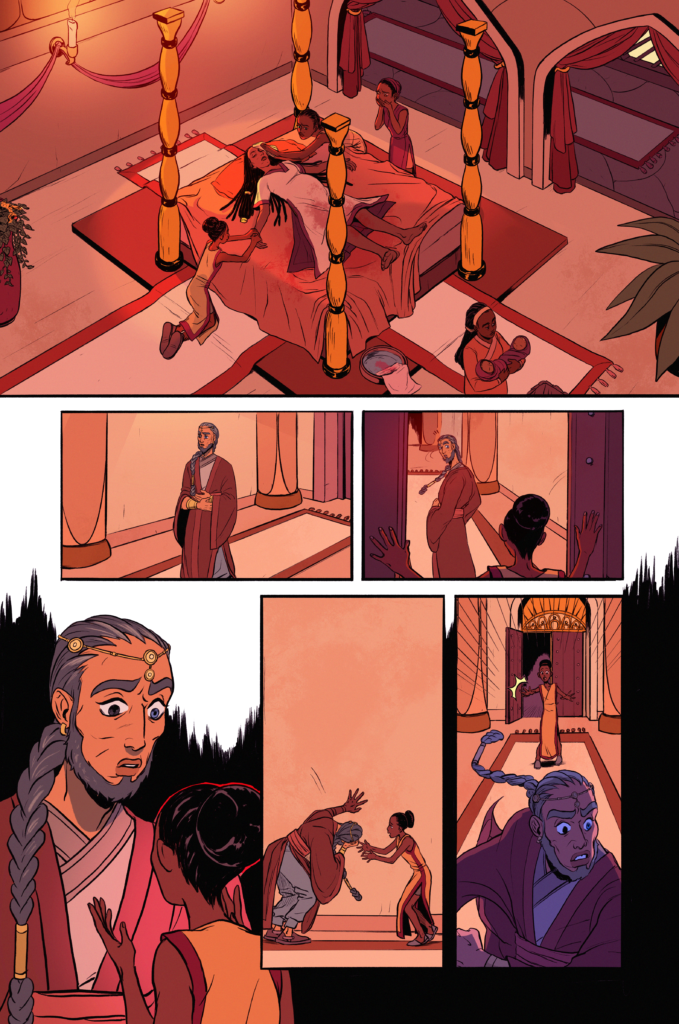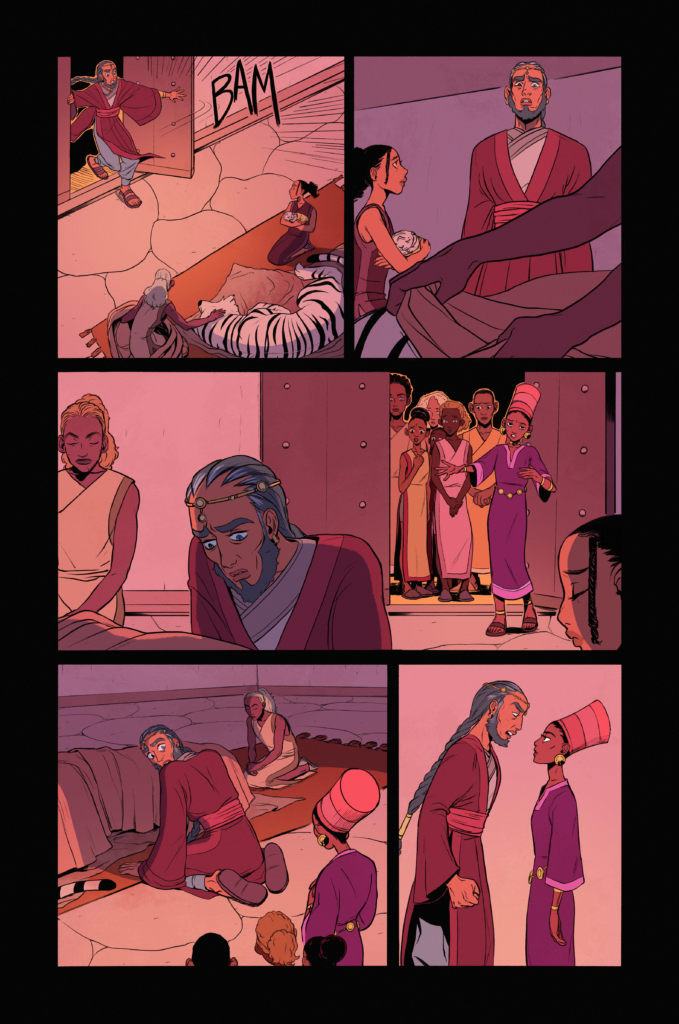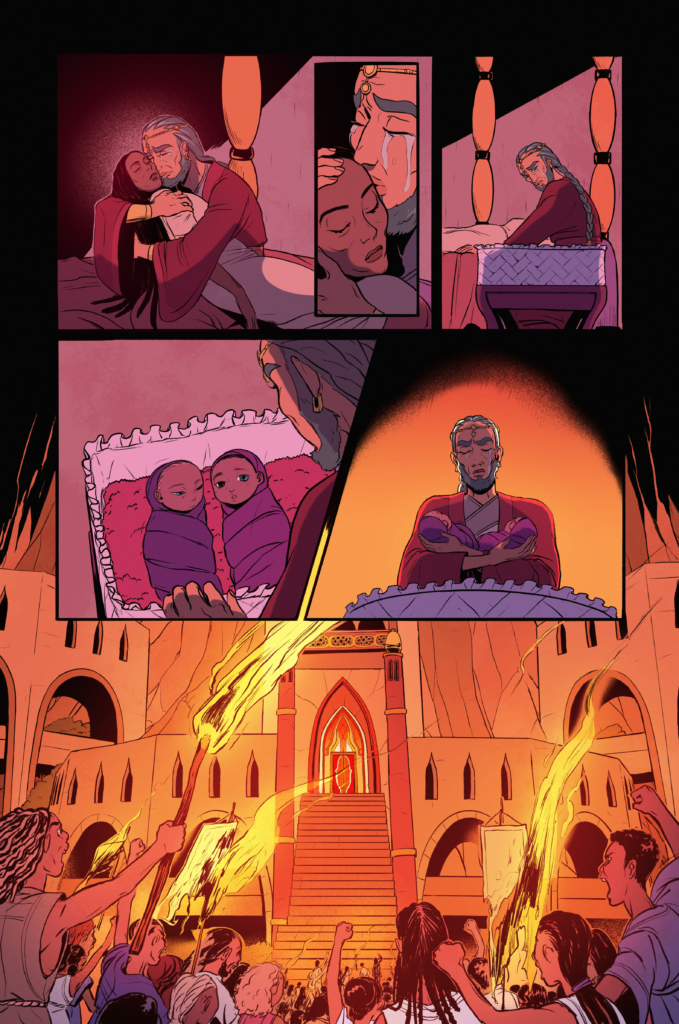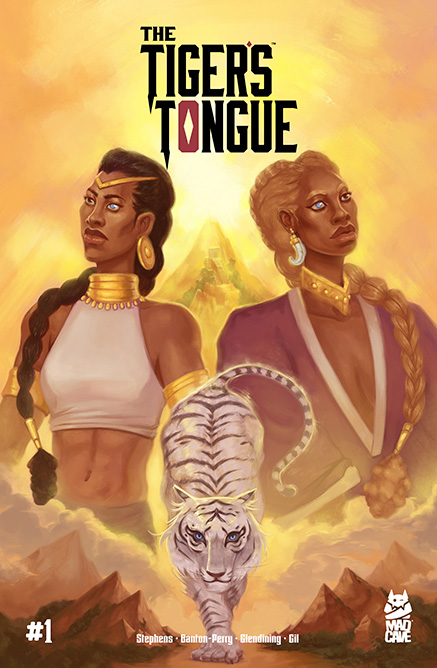
- Mad Cave Studios
- Written by Olivia Stephens
- Illustrated by Diansakhu Banton-Perry
- Inks & Colors by Bex Glendining
- Letters by Joamette Gil
- Covers by Odera Igbokwe
- Edited by Michael Moccio
- Available July 06, 2022
HEED THE TIGER’S TONGUE, AND YOU WILL NOT BE LED ASTRAY
Under the militant rule of The Tiger’s People, empowered by their animal familiars, the Claw is on the brink of war. At the precipice of adulthood, twin princesses Kelindi and Aridani hold the future of the Claw in their hands. Kelindi would sue for peace with The River’s People, those who were subjugated “to bring order,” while Aridani has never aspired to rule. But an ancient prophecy is revealed that’ll force fate’s hand for the sisters…
There’s something about twins and prophecies, and while I don’t have a twin I still think I kinda get it. Twins have always held a place of mystery, to some degree or another. People have gone on at length about the connection they share, whether it’s a holdover from time spent together in the womb, a by product of two embryos splitting off of the same cell, or something more mystical. No matter how you shape it, twins have always had a seat reserved at the table of prophecy, and fictional accounts of their struggles are many.
In the case of identical twin sisters Kelindi and Aridani, daughters to King Oleandra and Queen Kembri, their lives are destined to be marked by conflict. A warning given two hundred years ago determined that twins born into the royal family would fight to determine the course of the “Tiger’s People”. As the sisters are coming of age, the time of prophecy is now.
In the opening pages of Tiger’s Tongue, writer Olivia Stephens has a lot of heavy lifting to get done. She’s establishing a culture made up of two peoples, Tiger & River, while telling a tragic story of her main characters’ birth, showing the dual nature of their father, and developing the fable that foresees their inevitable fight. I have to take my hat off to Stephens as she weaves these threads together. The story of the birth is told without dialogue, while a text box “voiceover” lays out the history of their people and the resulting prediction. It’s an ambitious opening, and with all the information packed in it took a little time for me to put the pieces together. The heavy opening was helped by the second part of the issue, where Stephens was able to slow things down a bit, introducing Kelindi & Aridani as characters rather than just pieces on the gameboard of Fate.
This is where Olivia Stephens’s story shines, where the sisters are shown to be two very different people. Aridani is more of the free spirit, content with her status as the second born and more in tune with her family’s connection to their Tiger totem. Kelindi is the more serious of the two, determined to live up to her royal responsibilities, even when that means cleaning up after her less ambitious sibling. Stephens is walking a tightrope, setting her main characters up in the very well-established roles of twins without making it come across as an easy plot device. Aridani and Kelindi are likeable, the love they have for each other is made clear, and much of that is owed to the care taken in crafting the two leads.
The pencils by Diansakhu Banton-Perry are gorgeous, very much in keeping with African art that I’ve seen. As with the narrative, Banton-Perry’s layouts are pretty dense and like I said there’s a lot of story that’s left wholly on the illustrations to tell. I have no doubt that there were plenty challenges in the making of this comic, and I have nothing but respect for the job done. With all of the detail involved, keeping track of individuals in a crowd and switching perspectives to follow multiple characters, I did lose track of what was going on a couple times. There were some odd angles that made it difficult to pick up on what turned out to be important plot points, and a couple panels that could have been pulled back a bit to show a bigger picture. With all of that, Diansakhu Banton-Perry pulled it all off with more success than many experienced comicbook artists, and she’s got all kinds of room to grow as she fine tunes her style.
Here’s where I have to admit to the largest problem I bumped up against in this book. The color palette is pretty singular in its use of warm oranges and reds. I understand the choices in theory, but in execution it resulted in crowds of people- some of whom were important to the story- wearing very similar clothes and blending together in a mass. With a tweak or two, design elements added to separate the people we need to be focused on, it could have been a little easier to follow along with the visual cues being given.
I whole-heartedly believe that enjoying a comic is a group effort, between the creators & their readers, but it would be a shame if Tiger’s Tongue lost people who are put off by the need for second and third readings. It’s an impressive opening chapter for a story that dips into African mythology, creating its own lore as it goes. This is tailor made for readers looking for a comic exploring that realm of the supernatural, the drama created by family obligations, and living up to expectations instead of being true to yourself.
Final Score: 10/13
